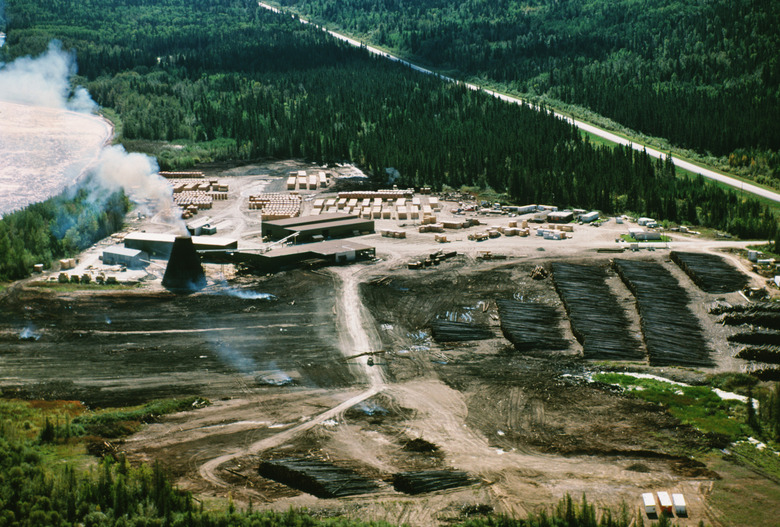Things That Are Being Done To Help With Deforestation
We may receive a commission on purchases made from links.
The Nature Conservancy estimates that the planet has lost approximately half of its mature forest cover through deforestation. Forests are not only important in absorbing carbon dioxide, but they are also host to biologically diverse ecosystems, meaning that their loss puts many other species at greater risk of extinction. Activists and individuals alike have been working to reduce deforestation.
Corporate Solutions
Corporate Solutions
If it is economically beneficial for corporations to minimize their impact on deforestation, such as by making products from recycled pulp and paper, they will do so. Several organizations are working to make this happen. For example, the Forest Stewardship Council offers an independent certification for products made from recycled pulp, paper and fiber, helping consumers find the most forest-friendly products. Pressure from groups like Greenpeace has also been successful in getting corporations to cut unsustainable suppliers from their supply chains, such as when Burger King dropped the Indonesian conglomerate Sinar Mas in 2010.
Political Solutions
Political Solutions
A primary method of preventing deforestation is to make it illegal. Several organizations are working toward this, often from slightly different angles. For example, Amazon Watch works at protecting indigenous communities living in the Amazon Rainforest, while others like the Sierra Club and the World Wildlife Fund seek to protect forested areas around the world. Other organizations, like the Environmental Defense Fund, push for bills that give landowners financial incentives to practice land conservation.
Reforestation
Reforestation
Another solution is to plant more trees to replace those already lost. Countries differ in their willingness to reforest, but some have found success. In China, for instance, citizens must plant three trees per year. Indeed, they added 5.9 million hectares of forest in 2009 alone. The United States lost around a million hectares of primary forest between 2000 and 2005 but still managed a net gain in forest cover as a result of reforestation.
Managed Timberlands for Paper
Managed Timberlands for Paper
Today, paper use does not create a net reduction in forest cover. All wood used for the production of paper is sourced from managed timberlands, also known as tree farms, which are grown specifically for this purpose. This is important because the value of a forest is not just in the wood but in biodiversity — the various animals and other life that live in the forest. Tree farms mean that forests with more established ecosystems don't need to be cut down for paper.
References
Cite This Article
MLA
Davies, Warren. "Things That Are Being Done To Help With Deforestation" sciencing.com, https://www.sciencing.com/things-being-done-deforestation-6080/. 24 April 2017.
APA
Davies, Warren. (2017, April 24). Things That Are Being Done To Help With Deforestation. sciencing.com. Retrieved from https://www.sciencing.com/things-being-done-deforestation-6080/
Chicago
Davies, Warren. Things That Are Being Done To Help With Deforestation last modified August 30, 2022. https://www.sciencing.com/things-being-done-deforestation-6080/
